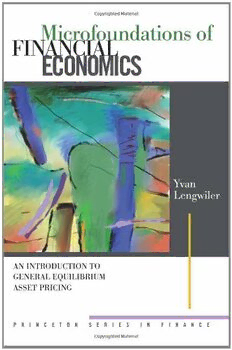
Microfoundations of Financial Economics: An Introduction to General Equilibrium Asset Pricing (Princeton Series in Finance) PDF
304 Pages·2006·3.333 MB·English
Most books are stored in the elastic cloud where traffic is expensive. For this reason, we have a limit on daily download.
Preview Microfoundations of Financial Economics: An Introduction to General Equilibrium Asset Pricing (Princeton Series in Finance)
Description:
This textbook takes the reader from the level of microeconomics principles through to modern asset pricing theory. Yvan Lengwiler elegantly links together issues that have in the past been the territory of general economic theorists on the one hand, and financial economists on the other. In a sequence of carefully explained steps, the reader learns how the first welfare theorem is used in asset pricing theory. The book then moves on to explore Radner economies and von Neumann-Morgenstern decision theory, and this section culminates in Wilson's mutuality principle and the consumption-based CAPM. This is then put into a dynamic setting, and term structure models are introduced. The empirical shortcomings of the standard asset pricing models are extensively discussed, as is research from the last twenty years aimed at bringing theory in line with reality. The reader is brought up to date on the latest areas of concern, such as habit formation, the consequences of heterogeneity, demographic effects, changing tax regimes, market frictions, and the implications of prospect theory for asset pricing. Aimed at masters or Ph.D. students specializing in financial economics, the book can also be used as a supplementary text for students of macroeconomics at this advanced level and will be of interest to finance professionals with a background in economics and mathematics. It includes problems (with solutions), and an accompanying website provides supporting material for lecturers.
See more
The list of books you might like
Most books are stored in the elastic cloud where traffic is expensive. For this reason, we have a limit on daily download.
